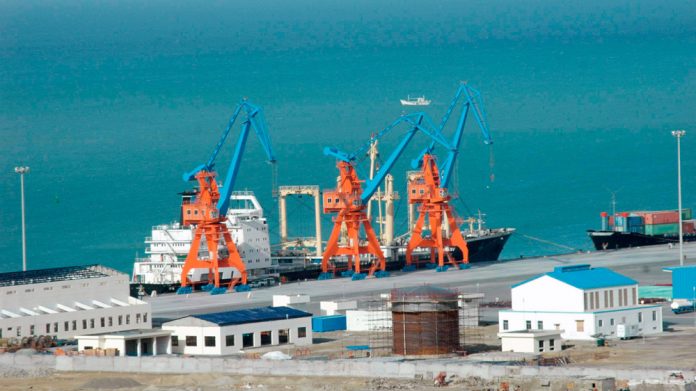ISLAMABAD: Though the government considers the import of machinery and equipment under the China Pakistan Economic Corridor (CPEC) as a major reason behind huge trade deficit, analysts believe that total inflows of machinery under CPEC were only two per cent of the total imports of the country.
According to them, the imports of liquefied natural gas (LNG), coal, household items, fresh fruits, vehicles, luxury items and others were increasing import bill as compared to the downward exports.
The import of coal, to feed the two coal fired power plants, including the recently inaugurated first 660-megawatt unit of Sahiwal Coal Power Project under CPEC and an 118-megawatt coal-fired power plant, a project of Fauji Fertilizer Bin Qasim Limited (FFBQL), was also to add to the import burden. With the mounting circular debt, rising imports are likely to increase pressure on foreign currency reserves of the country.
Finance Minister Ishaq Dar, during his budget speeches, claimed that the trade deficit was expected to rise as a result of import of machinery and equipment.
However, the analysts claim that government should not blame only the imports from China for rising imports as there are many other factors involved in surging the trade imbalances. Despite the grave situation of trade imbalances, the budget documents of the financial year 2017-18 lack any substantial proposal for, what the finance minister had claimed.
The State Bank of Pakistan (SBP) in its second quarterly report had clearly suggested that urgent measures were needed to contain imports, especially of consumer and luxury items to keep the overall import bill manageable.
It suggested a combination of improved competitiveness and administrative measures, enhanced productivity, and removal of structural impediments in the export sector.
Led by higher imports of machinery (power and construction) and petroleum including LNG, the total import bill grew by six per cent during the first six months of the FY17, compared to 8.9 per cent decline in the corresponding period last year.
While imports are essential at the moment to address infrastructure and energy bottlenecks, there is a need for an equivalent increase in foreign exchange earnings to finance these imports
As per the latest data of the Pakistan Bureau of Statistics (PBS), Pakistan’s trade deficit rose to $26.55 billion during July-April of the current fiscal year. The trade deficit is 40.12 per cent higher when compared to $18.95 billion for the same period a year before, creating serious concerns about balance of payment problem in the days ahead.
The PBS data showed a decline of 2.29 per cent in exports during July-April of FY 16-17 after exports dipped to $16.918 billion from $17.314 billion for the same period of the last fiscal year.
























